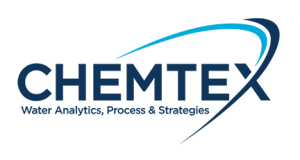
Removing Metals in Wastewater
The metal industry has to meet the EPA and local wastewater standards demanded by the Clean Water Act. This industry often relies on washing during the process to eliminate lubricant, oil, acid, or residue. This washing can be necessary multiple times throughout the industrial process steps, generating significant amounts of contaminated wastewater. The contaminants can include alkaline, acid, coolant, or etching wastewater compounds and rinses. Another category of metal wastewater results from such processes as grinding, stamping, tumbling, plating, electroplating, metal refining, machining, powder coating, and scrap metal recovery.
Treatment Is Complex and Costly
There’s also the question of heavy metals. Safely and properly removing heavy metals from plating/e-coating/galvanizing operations has been a challenge in the industrial market for many years. Frequently these hazardous pollutants are removed from industrial waters by the generous addition of commodity-based inorganic chemicals (often acidic salts).
Such traditional inorganic chemical additions may be effective and relatively inexpensive on a cost per pound basis. However, they contribute to additional treatment expenses including water usage, sludge production, and heavy labor costs to handle and remove these industrial solids.
What Are Heavy Metals?
Interestingly, “heavy metals” is a commonly used term that lacks a firm definition. Here’s how Wikipedia expresses the issue:
Heavy metals are generally defined as metals with relatively high densities, atomic weights, or atomic numbers. The criteria used, and whether metalloids are included, vary depending on the author and context. In metallurgy, for example, a heavy metal may be defined on the basis of density, whereas in physics the distinguishing criterion might be atomic number, while a chemist would likely be more concerned with chemical behavior.


Here’s another definition from Corrosionpedia, the online hub for corrosion professionals:
Heavy metals are metal elements that are categorized by their high density relative to other metals. Many, but not all, heavy metals are considered toxic. Heavy metals are typically considered heavy when they have a density ratio of 5:1 when compared with water.
Chemtex for EPA Compliance in the Metal Industry
In any case, the bottom line is that any facility in the metal fabrication business faces significant wastewater processing requirements.
Here at International Chemtex, we stay abreast of the latest advancements in chemistries and equipment, and we also work with clients on providing overall education and training to help address the complete costs and challenges faced by our clients in the metals industry.
If you’re in the metal processing industry, please reach out to the team at International Chemtex . We will offer you the latest ideas and chemistries to help you remain in compliance, reduce output and save money. We can help you achieve your company’s water compliance initiatives.



/NQA-ISO-9001-Logo-ANAB.jpg)